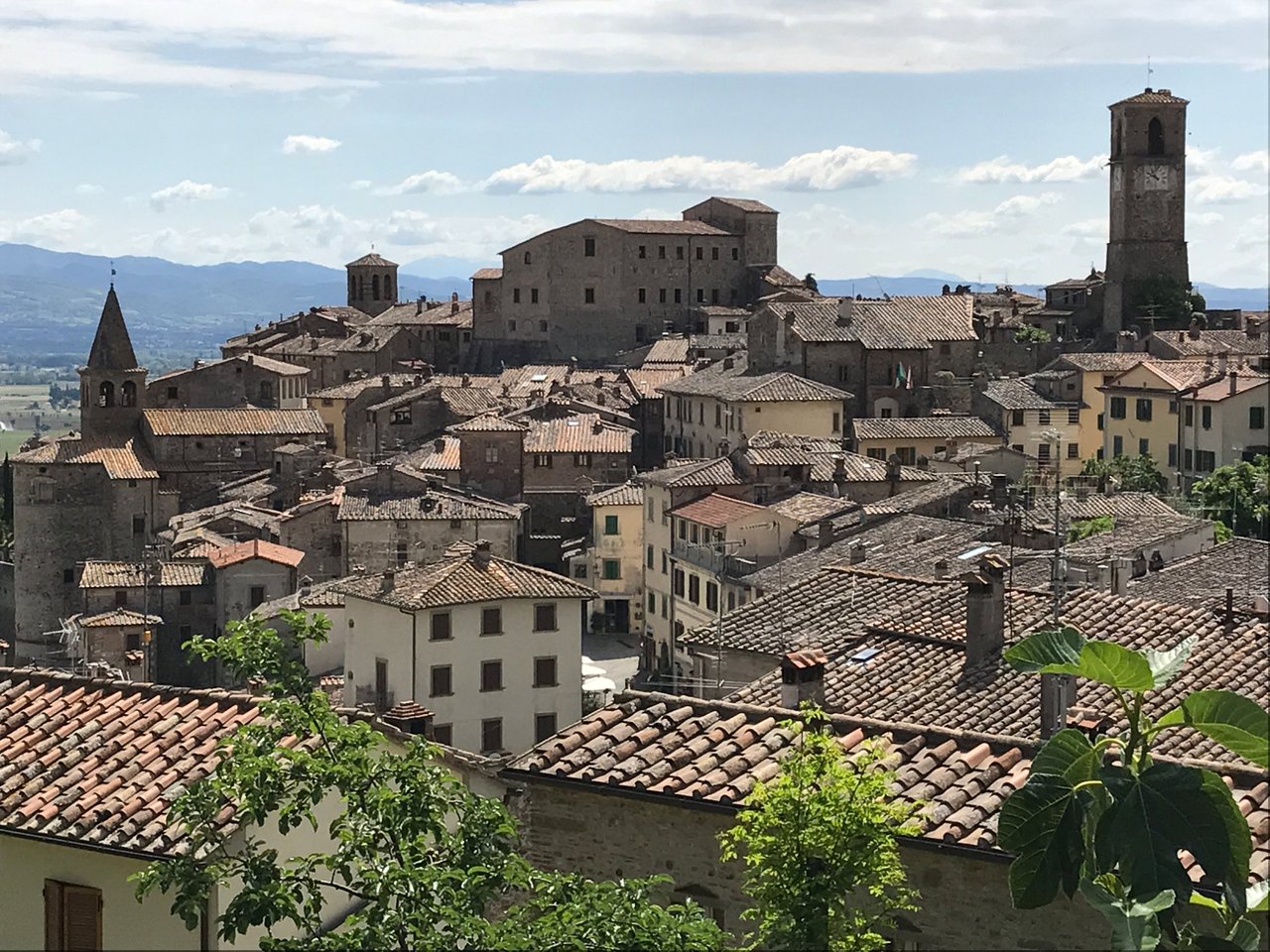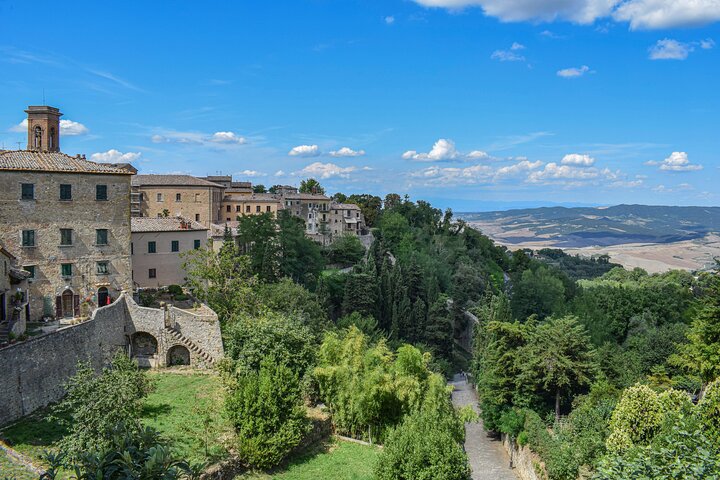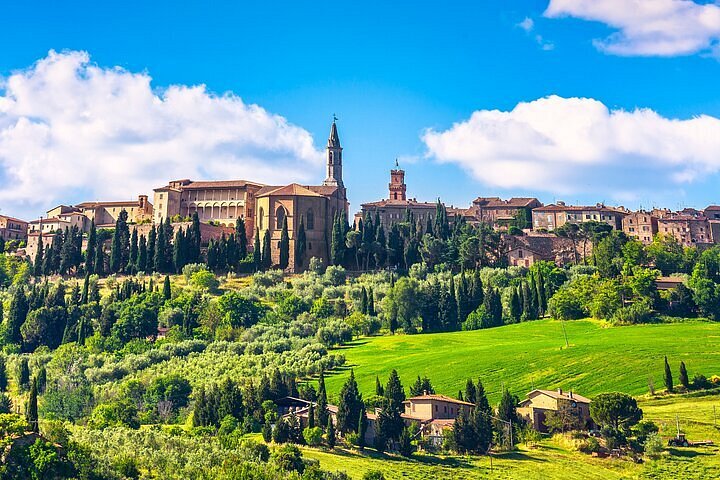Known for its rich history and artsy culture, would-be expats often assume that well-touristed Tuscany will fall outside their budget. Indeed, well-known spots like Florence, San Gimignano, and Siena can prove more expensive… but Tuscany still offers up plenty of places—rustic country retreats, city-center lifestyles, and tidy hill towns—where all the benefits of life in Tuscany shine through but where the cost of living remains remarkably modest.
Few can resist the charms of Tuscany. Rolling hills with neat rows of vineyards and centuries-old olive groves, medieval towns brimming with history, mouth-watering traditional food, and wines.
According to the Italian National Institute of Statistics, the number of Americans calling this picturesque Italian region home increased by 6% between 2019 and 2023, growing from 2,193 four years ago to 2,323 today. Most tend to settle in the best-known spots—like Florence—but Tuscany is awash with hidden gems.
“If Europe is in your sights—whether you’re planning to move out of the US in your working years, retire abroad, are in the market for a part-time getaway, or you’re simply after an extended adventure—Italy should be high on your list of options,” says International Living Executive Editor Jennifer Stevens.

“It’s a place that offers up hard-to-resist lifestyle benefits: a slower pace of life, great food, fine wines, long history, extraordinary art museums, glorious natural landscapes, and a comfortable climate. And when you venture off the well-beaten tourist path, you’ll find that Italy is much more affordable than you probably think—including Tuscany. In fact, it’s a country that offers a high standard of living even on a modest budget.
“If Tuscany is your dream, but good-value is important, look toward the region’s periphery. Here, you’ll discover a wealth of enchanting small towns—many of which have managed to stay under the mainstream tourist radar, yet they boast of historic charm and picturesque landscapes. Even in the tiniest hamlets, you’ll often find a thriving expat community of in-the-know transplants, a testament to Tuscany’s enduring appeal among foreigners.”
Here are three places our International Living editors recommend for a relocation in Tuscany—all communities where expats report living comfortably on less than $2,000 a month.

Lucca is a marvelous medieval town of refined palaces, belfries, and piazzas within easy reach of Pisa and only about 75 minutes from the sea. The city boasts one of the best-preserved historic centers in Italy and offers plenty to do. It’s called “the city of art” for a good reason: Romanesque-Gothic churches filled with masterpieces sit on almost every corner, and it’s full of galleries and museums with works by Tintoretto, Titian, Veronese, and Fra Bartolomeo.
Lucca’s location in Tuscany’s northwest has caused the city some grief in its over 2,000 years of history, but being the center of much conflict from Roman times all the way to the 16th century and beyond gave rise to Lucca’s most distinctive architectural feature: the impressive stone walls that surround and enclose the historic district of this fascinating Italian town.
Lucca has been affluent for most of its history, and its landmarks are well-restored. Boutiques, bars, delicatessens, and restaurants are busy with customers.

Elegant yet unhurried, the city of Arezzo brings together the best of old and new Tuscany with an easy-going lifestyle and fewer tourists than you’d expect in such a culturally-rich and beautiful city. With great ambiance, a rich cultural line-up, and year-round events, Arezzo makes a perfect retirement destination.
Arezzo fell under the realm of the Medici’s grand duchy for a time, and shades of Florence abound in its public buildings, aristocratic palaces, churches, and artwork. It’s hard not to draw parallels to Florence as you walk around the city. The pleasant pastel and stone buildings along cobbled lanes blend many similar Medieval and Renaissance styles, which you’ll recognize from Florence, just about an hour away.
The historic center is the dazzling drawing room of Arezzo, still partially enclosed by protective walls with its monumental gates intact. At the summit of town, the ruins of the Medici fortress survey the panoramas of picturesque Tuscan countryside awash with olive groves and vineyards. The lower, newer town has its charms and services, keeping the city from stalling in the Middle Ages and making Arezzo both modern and historic—a fine mix for everyday life.

Called the City of Alabaster, artisans have been mining and crafting the stone in Volterra since the Etruscans and have honed it into a fine art form. It is also consistently listed among the most beautiful towns in Tuscany, ranking along with better-known Cortona and Montepulciano. But while tourists find their way here, it does not have the high tourist numbers found in other parts of Tuscany, leaving Volterra with a sense of local life and identity all its own.
Olive groves, cultivated fields, and vineyards punctuated with stately cypress trees create the classic Tuscan landscape, while the town itself preserves its Old World splendor–but with high-speed internet, a hospital, and strong cultural offerings.
With about 10,500 residents, Volterra offers a small-town ambiance with all the things you need for daily life, Tuscany-style, that is—surrounded by beauty. There are supermarkets, delicatessens, wine bars, coffee bars, and a plethora of restaurants. The cities of Siena, and Pisa, with the closest airport, are just about an hour away.







